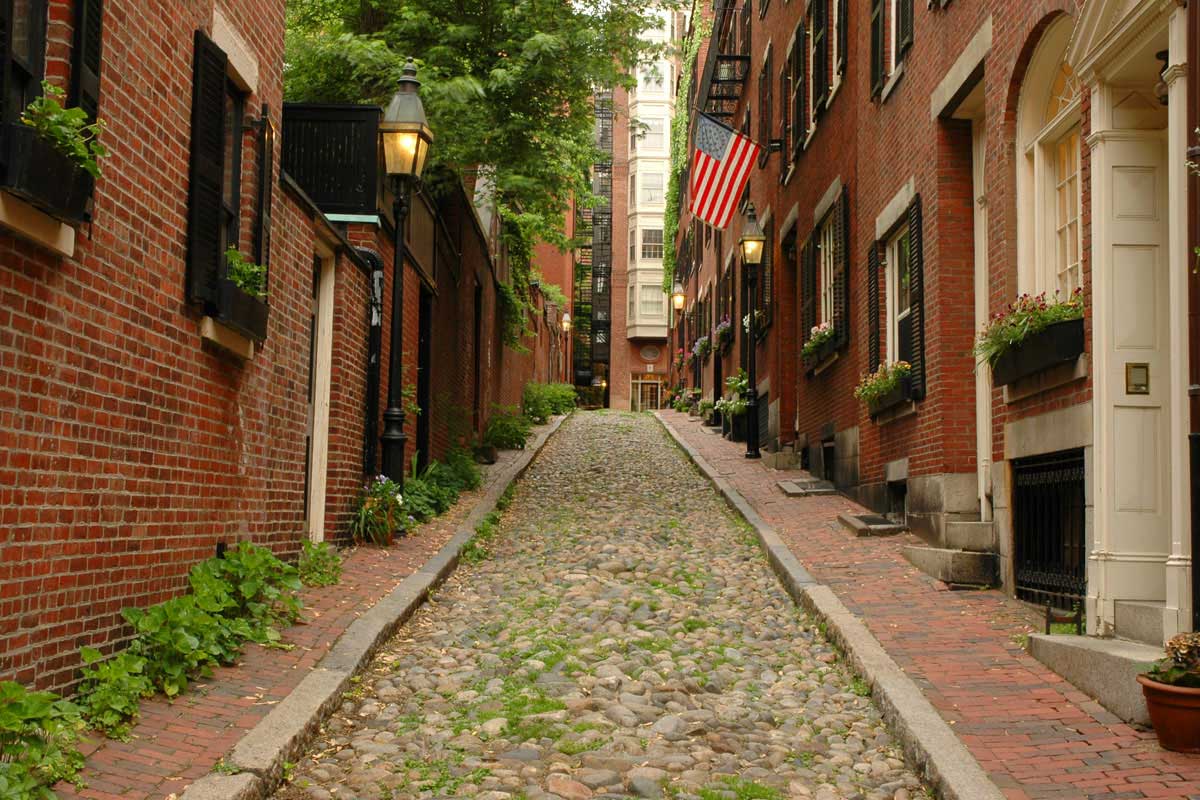

Eighteen and a half or 19 acres of grassland west of the State House was purchased in 1795, most of it from John Singleton Copley. when by 1780 the city's neighborhoods could no longer meet the needs of the growing number of residents. The Mount Vernon Proprietors group was formed to develop the trimount area, The name trimount later morphed into "Tremont", as in Tremont Street. Its construction was completed in 1795, replacing the Old State House in the center of Boston. In 1787 Charles Bulfinch designed the Massachusetts State House. John Singleton Copley owned land on the south slope for pasture for his cows and farmland. 18th century īeacon Street was established in 1708 from a cow path to the Boston Common. " Fringe activities" occurred on "Mount Whoredom", the backslope of Beacon Hill. As a result, it became an "undesirable" area for Boston residents. Sailors and British soldiers visited the north slope of Beacon Hill during the 17th and 18th centuries. In 1634 a signal beacon was established on the top of the hill. The southwestern slope was used by the city for military drills and livestock grazing. In 1630 Boston was settled by the Massachusetts Bay Company. The settlement was a "preformal arrangement". In 1625 he built a house and orchard on Beacon Hill's south slope, roughly at the location of Beacon and Spruce street. The first European settler was William Blaxton, also spelled Blackstone. The memorial, located in the Boston Common, depicts the city's first English resident, William Blackstone, greeting colonial governor John Winthrop and his company.

#Acorn street boston zip
Race Beacon Hill/ Financial District (02108) racial breakdown of population (2017) Raceīeacon Hill/ West End (02114) racial breakdown of population (2017) RaceĪccording to the 2012–2016 American Community Survey 5-Year Estimates, the largest ancestry groups in ZIP Codes 0214 are: Ancestryįounders Memorial, John Francis Paramino, 1930. Other family types make up 18.4% of Beacon Hill's population, with 90.8% being female householder with no husband present and a majority of these households included children under 18 present. 36.6% of married couple families were with related children under the age of 18 and 63.4% were with no related children under age 18.

Of the 1,479 family households 81.6% were married couple families. Īccording to 2007-2011 American Community Survey estimates, of the 5,411 households in Beacon Hill, 27.3% were family households and 72.7 were non-family households (with 55.7% of those female householder). The racial/ethnic make-up of the neighborhood's population is as follows: 86.8% of the population is white, 2% black or African American, 4.1% Hispanic or Latino, 0.1% American Indian or Alaska Native, 5.3% Asian, 0.4% some other race/ethnicity, and 1.3% two or more races/ethnicities. This reflects a slight (0.3% or 29 individuals) decrease from the 2000 Census. Census, the population of Boston's Beacon Hill neighborhood is 9,023. īefore the hill was reduced substantially, Beacon Hill was located just behind the current site of the Massachusetts State House. Charles Street was one of the new roads created from the project. The shoreline and bodies of water such as the Mill Pond had a "massive filling", increasing Boston's land mass by 150%. Between 18 Beacon Hill was reduced from 138 feet in elevation to 80 feet.

The name trimount later morphed into "Tremont", as in Tremont Street. Located in the center of the Shawmut Peninsula, the area originally had three hills, Beacon Hill and two others nearby Pemberton Hill and Mount Vernon, which were leveled for Beacon Hill development. It is west of Charles Street and between Beacon Street and Cambridge Street. Beacon Hill has three sections: the south slope, the north slope and the "Flat of the Hill", which is a level neighborhood built on landfill. The block bound by Beacon, Tremont and Park Streets is included as well. It is about 1/6 of a square mile, and situated along the riverfront of the Charles River Esplanade to the west, just north of Boston Common and the Boston Public Garden. Geography īeacon Hill is bounded by Storrow Drive, and Cambridge, Bowdoin, Park and Beacon Streets. The beacon was used to warn the residents of an invasion. Like many similarly named areas, the neighborhood is named for the location of a former beacon atop the highest point in central Boston. Cutting down Beacon Hill in 1811 a view from the north toward the Massachusetts State House


 0 kommentar(er)
0 kommentar(er)
